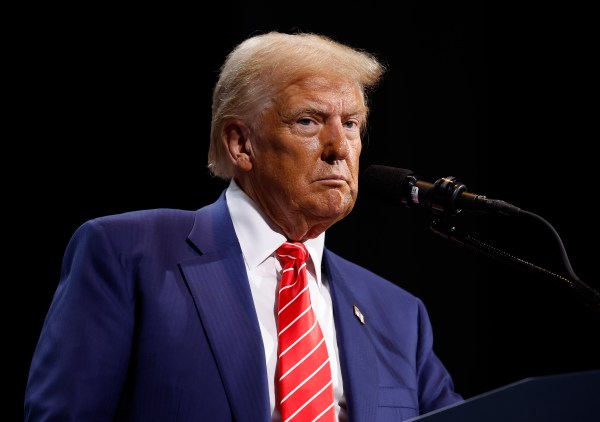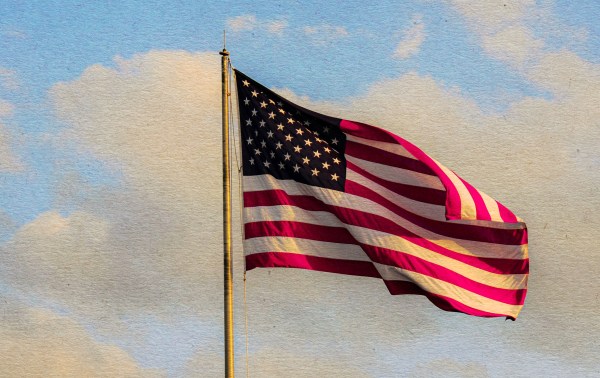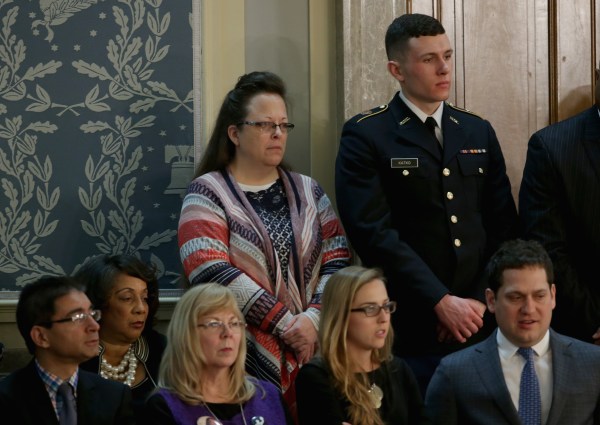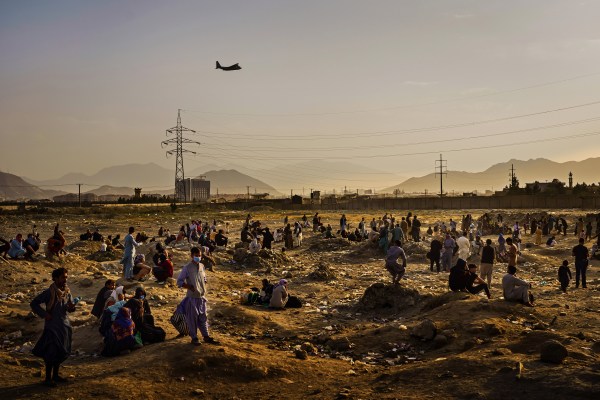America’s war in Afghanistan successfully killed or captured most of al-Qaeda’s original senior leaders, destroyed their safe haven in Afghanistan, and helped prevent another 9/11-scale terrorist attack in the United States. But alongside those gains are the war’s failings: The Taliban and al-Qaeda reestablished safe haven in Pakistan, the Afghan state is weak and corrupt, the Afghan army is dependent on international support and its continued existence may be in doubt. The Taliban is resurgent, peace negotiations between it and the Afghan government have stalled, and jihadists are celebrating the American withdrawal as a victory for their cause.
These failings stemmed from strategic blunders committed by every commander in chief who oversaw the 20-year effort there: George W. Bush’s light footprint and war in Iraq, Barack Obama’s self-defeating doubts and withdrawal timetables, Donald Trump’s peace deal, and now Joe Biden’s withdrawal. These decisions helped make a bad situation worse and virtually assured that the future course of events in Afghanistan will reflect the Taliban’s interests more than the United States’. These errors share in common a failure to understand what America’s interests were in Afghanistan and how to achieve them at acceptable cost within the constraints imposed by external circumstances.
Bush’s Light Footprint, 2001–2006
Bush approached the prospect of war in Afghanistan predisposed to favor a light footprint, not just in military power but civilian resources and reconstruction assistance. He had campaigned against “nation-building” in 2000 and criticized the Clinton administration for using the military for humanitarian purposes. Secretary of Defense Donald Rumsfeld sought to transform the military by substituting high technology for manpower, which predisposed him to oppose manpower-intensive operations like peacekeeping or nation building. And based on a version of Afghan history then circulating in Washington that painted Afghanistan (inaccurately) as a legendarily xenophobic “Graveyard of Empires” hypersensitive to foreign involvement, Bush and many of his advisers believed that they had to avoid appearing like an imperial occupier at all costs.
The initial military campaign seemed to justify their beliefs in the efficacy of a light footprint. A small number of U.S. Special Operations forces and intelligence personnel embedded themselves with Afghan Northern Alliances forces and Pashtun militias to coordinate Afghan ground attacks with American air power. The U.S.-Afghan linkup was an impressive and successful improvisation: Operations started on October 7, 2001; Konduz fell on November 7, ending Taliban rule in the north; the Taliban government fell from power exactly a week later without a fight; and the Taliban was routed in its home territory of Kandahar on December 7. Operations against al-Qaeda at Tora Bora in Nangarhar Province in December 2001, and the Shahi Kot valley of Paktia Province in March 2002 appeared to be the last major operations of the war. Some scholars hailed the “Afghan model” as a new form of warfare for the 21st century.
But the “Afghan model” had nothing to offer policymakers confronted with the next challenge. Afghanistan’s future was suddenly thrust to the forefront of American and international attention. The rapid collapse of the Taliban and al-Qaeda’s apparent loss of safe haven were important successes, but it was obvious that these gains would be quickly reversed if the United States left without helping reconstitute an Afghan state and Afghan security forces. Helping Afghanistan was not charity; it was strategy. Yet neither the Bush administration nor international partners mustered the political will or material resources for the kind of intervention Afghanistan needed in those first, crucial years.
Almost no U.S. military forces were given the mission to provide security (except during elections), train Afghan forces, or conduct peacekeeping or peace building operations for the first five years of the intervention. The few U.S. troops in-country—only 20,000 by end of 2005—were focused on counterterrorism operations against al-Qaeda. Another 5,000 to 10,000 allied troops constituted the U.N.-mandated International Security Assistance Force (ISAF) and kept the peace in Kabul but were initially not authorized to move beyond the capital city lest they interfere with U.S. operations. They only gradually expanded to the rest of the country in stages through 2006.
The Bush administration tried to arrange a division of labor in which the U.S. would focus on counterterrorism while the U.N. and European partners focused on state building and peacekeeping. The arrangement failed. The U.N. and the European allies coordinated poorly, started late, and simply did not recognize the scale of Afghanistan’s needs. In addition, they also favored a light footprint approach: Recent peacebuilding operations in Bosnia, Kosovo, and East Timor had made them feel they had come too close to a new form of imperialism. The United States failed to uphold its part of the deal when the Bush administration decided to go to war in Iraq, dividing American resources, time, and—most importantly—attention. The result was that the United States and U.N. together initially approached the world’s most failed state with a predisposition to do as little as possible.
There were key successes in the first five years, including the adoption of a new constitution, relatively successful elections in 2004 and 2005, the U.N.’s efforts to demilitarize warlords’ militias, the rapidly growing Afghan economy, and indices of human development that started to track upward for the first time in decades. But the light international footprint meant there were few obstacles to the resurgence of the Taliban itself or the drug trade that filled its coffers. The Taliban had not been destroyed, only pushed across the border to Pakistan, where it enjoyed safe haven and some measure of official support. It remained ideologically committed to waging jihad and restoring its Islamic Emirate in Afghanistan. The absence of U.S., Afghan, or international security forces in much of the country left a power vacuum into which the Taliban easily stepped. The lack of progress rebuilding the Afghan government gave the Taliban an easy selling point to a restive population impatient with insecurity and growing government corruption.
Bush officials defended their light footprint approach at the time as a necessary concession to Afghan history and culture, fearing that the United States would look like an imperial occupier with a larger force. Some scholars, then and now, have echoed the same concern—and even blamed the Taliban insurgency on a supposedly overbearing U.S. approach. This view has major weaknesses. If the Taliban were a popular uprising against foreign occupation, we would expect to see it emerge as a reaction to the presence of foreign troops and civilians, to grow in proportion to the size and invasiveness of the international presence, and to be broad-based geographically and ethnically across Afghanistan. None of those were true of the Taliban insurgency, which emerged in 2005-06, four to five years after the introduction of international military forces and four years before the major surge of U.S. troops under the Obama administration. Far from being a nationwide movement, it was limited to a small minority of Pashtun tribes and the minority Deobandi sect.
The causes of the Taliban insurgency are straightforward. As Seth Jones has argued, “Weak governance is a common precondition of insurgencies. The Afghan government was unable to provide basic services to the population; its security forces were too weak to establish law and order; and too few international forces were available to fill the gap. Afghan insurgent groups took advantage of this anarchic situation.” The first six months of the war had gone so smoothly it gave an illusion of success and a belief that Afghanistan would take care of itself. It could not, of course, but the relative international neglect and Bush’s light footprint and subsequent war in Iraq came close to undoing the progress made since 2001.
Obama’s Doubts
Obama came into office having promised to refocus U.S. efforts on Afghanistan and Pakistan and to win the war. Within weeks of taking office, Obama ordered 21,000 more troops to Afghanistan. He defined the goal clearly: “to disrupt, dismantle, and defeat al Qaeda and its safe havens in Pakistan, and to prevent their return to Pakistan or Afghanistan.” His policy explicitly committed the United States to “promoting a more capable, accountable, and effective government in Afghanistan” which required “executing and resourcing an integrated civilian-military counterinsurgency strategy in Afghanistan.” He quadrupled the number of U.S. diplomats and aid workers in country and increased civilian assistance by $2 billion from 2009 to 2010.
But following a series of setbacks in 2009, Obama lost faith in his initial policy and changed course. Violence had dramatically spiked, the August 2009 Afghan presidential election was marred by fraud, and Obama administration officials publicly sparred with Afghan President Hamid Karzai. Amidst this deteriorating situation, General Stanley McChrystal, the new Commander of the International Security Assistance Force (ISAF), delivered his initial assessment of the conflict in August 2009. His verdict was blunt. “The situation in Afghanistan is serious,” he warned, “Many indicators suggest the overall situation is deteriorating. We face not only a resilient and growing insurgency; there is also a crisis of confidence among Afghans—in both their government and the international community—that undermines our credibility and emboldens the insurgents.” The assessment leaked to the press and helped fuel a public perception that the Obama administration’s new policy was failing or was unrealistic, despite that the new policy had not had time to be fully implemented.
The crisis of 2009 led Obama to a “reassessment of whether the war was as necessary as he first believed,” according to New York Times reporter David Sanger. Obama came to believe that “progress was possible—but not on the kind of timeline that [he] thought economically or politically affordable.” The president faced a basic strategic choice between a lean, pared-down counterterrorism mission focused on al-Qaeda, or a larger and more ambitious counterinsurgency strategy to beat back the Taliban while improving Afghan governance. Obama compromised: he ordered another surge, this time of 30,000 troops—more than required for a narrow counterterrorism operation, but fewer than the 80,000 McChrystal recommended.
The new approach was “not fully resourced counterinsurgency or nation building, but a narrower approach tied more tightly to the core goal of disrupting, dismantling, and eventually defeating al Qaeda,” according to an internal NSC memo. And because Obama decided against counterinsurgency, he also backed off his commitment to promoting accountable and effective government in Afghanistan. Following the president’s guidance, a group of White House staffers convened starting in 2010 to search for an “Afghan Good Enough” solution and exit, an effort to lower the goal posts and make it easier for the United States to declare victory and leave. Civilian aid to Afghanistan decreased every year after 2010.
Obama’s Withdrawal Deadlines
The surge made real military progress against the Taliban. The U.N. reported in March 2011 that “the number of districts under insurgent control has decreased. … In Kabul, the increasingly effective Afghan national security forces continue to limit insurgent attacks.” But the surge’s gains were undone by the premature withdrawal of international military forces, a withdrawal that had no military logic and was initiated for President Obama’s political gain.
Obama publicly defended the withdrawal as a necessary tactic to compel the Afghan government to reform and stand on its own. But domestic political considerations were a major consideration. Obama reportedly worried in meetings that, “I can’t lose all the Democratic Party,” according to Bob Woodward’s account of the administration’s deliberations. “And people at home don’t want to hear we’re going to be there for ten years. …We can’t sustain a commitment indefinitely in the United States. We can’t sustain support at home and with allies without having some explanation that involves timelines.” Secretary of Defense Robert Gates later argued in his memoir that, “with the deadlines Obama politically bought our military—and civilians—five more years to achieve our mission in Afghanistan.”
Was Obama right that withdrawal was necessary to sustain public support for the war? There is, in fact, some indication that Obama led, rather than followed, public skepticism about the war. In July 2008 (when Obama gave his campaign speech promising to win the war), 57 percent of Americans supported sending more U.S. troops to Afghanistan. In February 2009, 65 percent of the public supported Obama’s deployment of more troops, and 70 percent believed Afghanistan would fall to the Taliban if the United States withdrew. The public eventually expressed support for the withdrawal deadlines—after Obama announced them. In February 2009, 48 percent of Americans believed the United States should keep troops in Afghanistan until the situation got better, while 47 percent believed it should set a timetable for withdrawing troops. Throughout 2009, the public wavered, split evenly between surging and withdrawing.
But in July 2010, seven months after the president’s speech, only 33 percent wanted to keep troops there for the duration, while 66 percent supported the timetable. The public did not demand a withdrawal deadline prior to Obama’s announcement of one. Obama was not forced by public pressure to withdraw troops, and time was not running out on the Afghan mission. As in Iraq, there was a partisan divide on the war: the Democratic Party solidly opposed the surge and supported the deadline. In September 2009, 62 percent of Democrats opposed Obama’s impending surge decision, and 63 percent of Republicans supported it, suggesting that while the president did not realize any broad political gain by withdrawing from Afghanistan, he protected his relationship to his political base in the run-up to both the 2010 midterm elections and his 2012 reelection.
It is hard to overstate the damaging effect of Obama’s withdrawal announcements. The publicly announced withdrawal deadlines incentivized hedging behavior by America’s Afghan allies concerned for their long-term prospects. Afghan officials who worried about the shape of a post-withdrawal Afghanistan were less likely to trust their American counterparts or invest in the slow work of institution-building and norm-setting so crucial for reconstruction and development. The withdrawal deprived the Afghan army and police of American trainers they needed. Throughout 2013 and 2014, the U.S. Department of Defense warned that Afghan security forces, though improving, faced capability gaps in logistics, intelligence, air support, and more, limiting their ability to undertake independent operations without U.S. support and training.
Just as importantly, the withdrawal announcements altered the Taliban’s strategic calculus. Critics universally warned at the time that the Taliban would take the withdrawal announcement as assurance it could simply wait out the United States, warnings that have been entirely vindicated. In 2010 U.S. General James Conway shared that the U.S. had intercepted Taliban communications explaining that this was the plan—and it is exactly what the Taliban subsequently has done. Even while the U.S. stayed in Afghanistan year after year and invested lives and money into the effort, most of it was wasted because of the participants’ expectations of an imminent American withdrawal.
Trump’s Deal and Biden’s Withdrawal
President Donald Trump inherited a war that he had campaigned against and promised to end, despite his hawkish campaign rhetoric against “radical Islamic terrorism” and his posture as the “most militaristic” candidate. In August 2017, following the input of National Security Adviser H.R. McMaster and Defense Secretary James Mattis, Trump repudiated talk of withdrawal, vowed to win the war, pledged a modest increase in troop numbers, and promised to loosen the rules of engagement. At the same time, he swore off nation building and, like Obama after 2010, did not invest in civilian reconstruction and stabilization. Trump’s strategy was not a return to the counterinsurgency strategy of 2007-2011, but a beefed-up version of the counterterrorism strategy that had already failed when Bush tried it before 2006 and when Obama tried it after 2012. Trump had no real sense of what was at stake in the war or why to stay.
At the same time, following his instincts and reputation as a deal-maker, Trump also appointed Zalmay Khalilzad as special representative for Afghanistan reconciliation to begin peace talks with the Taliban, an effort that bore fruit in February 2020. It was not the first attempt at talks with the Taliban, and the Bush and Obama administrations had long recognized that some form of talks would eventually take place to formalize the end of Afghanistan’s wars. But Trump’s talks took place without any preconditions on the Taliban—e.g., to denounce al-Qaeda, accept a ceasefire, or recognize the new Afghan constitution, as Bush had insisted. The talks were the first officially acknowledged post-9/11 bilateral talks between the U.S. government and the Taliban and thus they were the first to give the Taliban legitimacy as an actor on the international stage.
Because of these departures, Trump signed a peace deal with the Taliban that obliged the U.S, to withdrawal all military forces within 14 months in exchange for a pledge by the Taliban that Afghanistan would not be used as a base for attacks against the United States or its allies—a pledge for which there were no enforcement mechanisms in the agreement—and to begin talks with the Afghan government toward a ceasefire and political settlement. The agreement did not oblige the Taliban to denounce al-Qaeda, acknowledge their responsibility for the 2001 attacks, or take proactive military or law enforcement action against them. It contained only a weak pledge by the Taliban “not to cooperate with or permit international terrorist groups or individuals to recruit, train, raise funds … transit Afghanistan,” or use Afghan passports.
The peace deal was transparently an effort to paper over an American retreat. Just prior to the deal, Sirraj Haqqani, the deputy leader of the Taliban, published an op-ed in the New York Times. If the Taliban were sincere in its desire for peace, this was the moment to send a message to the American people to acknowledge and address their most important worry: that al-Qaeda would regain safe haven. But Haqqani pointedly made no mention of al-Qaeda by name, did not denounce the group or acknowledge its role in international terrorism, and expressed no regret for the attacks of 2001—a monumental diplomatic misstep—only making one oblique reference to “disruptive groups” whose presence had been exaggerated by “warmongering players.” Months later, the U.N.—hardly a “warmongering player”—publicly judged that the Taliban retained ties to al-Qaeda after signing the peace deal, but the Trump administration withdrew U.S. troops anyway, bringing the level down to 2,500 at the end of Trump’s term, the lowest since 2002.
During his campaign for the presidency, former Vice President Joe Biden accused Trump of leading the United States and the world to ruin with his “America First” foreign policy. Biden promised to restore American leadership, bolster democratic norms worldwide, and reinvest in the liberal international order. As he took office, the Taliban were making gains against Kabul, al-Qaeda enjoyed safe haven in Pakistan, and commentators openly wondered how long the Afghan government would last before collapse. Judging from the gravity of the situation, the stakes at play, and Biden’s rhetoric about American leadership and international norms, he might have been expected to repudiate Trump’s peace deal with the Taliban and recommit the United States to achieving lasting peace in Afghanistan.
Instead, he inexplicably chose to follow through on the deal after a short delay. He claimed that the mission was accomplished when U.S. forces killed Osama bin Laden and that the U.S. “did not go to Afghanistan to nation-build,” betraying a morally callous and strategically shallow understanding of how to fight and win wars. He vowed that the U.S. would continue humanitarian assistance and support women’s rights, which would be surprising considering the difficulty of implementing aid programs in a war zone without protection. He justified the withdrawal by saying that, “It’s up to Afghans to make the decision about the future of their country,” implying that the integrity of Afghans’ decisions about their country was invalidated by the U.S. security presence, but not by the Taliban’s military gains. Afghans will not be free to make decisions about the future of their country when they are held at gunpoint by men who have every intention of making those decisions alone.
Counterterrorism vs. Counterinsurgency
Poor strategic choices were not the only factors that led to strategic setbacks in Afghanistan. Several factors outside U.S. control were unhelpful, including Pakistan’s unwillingness and inability to combat militants in its tribal areas; Russia’s and China’s growing antagonism towards the U.S.; Europe’s internal turmoil and refugee crisis; the war in Iraq; the 2008 financial crisis; U.S. domestic political turmoil; and the 2020 COVID-19 pandemic. And while many Afghans were notably steadfast and courageous, the Afghan government consistently proved corrupt and opportunistic. Collectively, these factors significantly constrained what might have been achievable in Afghanistan. But that does not mean that U.S. choices had no impact on the ultimate outcome. Bush’s light footprint, Obama’s withdrawal deadlines, and Trump’s peace deal were deliberate policy choices that caused direct, avoidable harm. Different choices at each junction could have altered the trajectory of ensuing events, almost certainly for the better.
The United States came closest to a successful strategy from 2007 to 2011, when the Bush and Obama administrations adopted the logic of counterinsurgency and peace building and gradually ramped up the scope and scale of the American intervention. Unsurprisingly, that is also when the Taliban was under the most pressure and the Obama administration came closest to opening meaningful negotiations with them while the United States still had negotiating leverage. Yet even then, what the United States ended up implementing was not counterinsurgency. It was a hybrid: Larger and more intensive than a counterterrorism mission, but leaner and more constrained than a full counterinsurgency mission. The surge of troops, civilians, and resources was short-lived and their effects were undercut by the looming withdrawal, which explains why negotiations sputtered out until 2018, when the United States no longer had the leverage to push for its most important goals.
The short-lived counterinsurgency strategy was an effort to close the gap that had opened up between U.S. goals and the resources the U.S. had committed to achieving them. Under the Bush administration U.S. goals were aspirational, including for Afghanistan to be “moderate, democratic, with a thriving private sector…and respectful of the rights of its citizens.” The Bush administration initially assumed that goal did not require a major American investment; subsequently, it did not ask if those goals were achievable at a cost and within a timeframe Americans were willing to invest while waging a similar war in Iraq at the same time. After his first year in office, Obama concluded that the United States would not, and possibly could not, muster the resources required for full counterinsurgency to work or for the U.S. to achieve its most aspirational goals, and consequently began to pare down U.S. goals—a trend that Trump continued.
Those judgments seem questionable. What was achievable in 2001 to2005, when the political and security environment was relatively permissive, was undercut by Bush’s decision to go to war in Iraq, and it was even less realistic and far costlier and more difficult to envision after the Taliban insurgency began in 2006—but the Bush administration was slow to adjust its vision of what success could look like. Bush could be faulted for failing to recognize and exploit the permissive environment that existed from 2001 to 2005; and, once it recognized that Afghanistan needed more attention, faulted again for recognizing too slowly how the environment in Afghanistan changed in 2005 and 2006. He could also be faulted, of course, for starting a second war while the first was unfinished.
Similarly, new opportunities opened up after Obama’s surge, and he might have exploited its military progress for diplomatic gains, but he remained locked into his withdrawal plans because of his skepticism about the suitability of counterinsurgency in the Afghan setting. The Obama administration could be faulted for abandoning its spring 2009 policy too quickly—something that could also be said of Trump and his 2017 policy—and faulted again for not recognizing the opportunities its own success had made possible by 2011.
Conclusion
If Bush and Obama’s poor decisions are understandable given the complexity of the situation and given experts’ competing advice, Trump’s peace deal is inexplicable. Having denounced Obama’s withdrawal timetable, Trump subsequently adopted his own—this one at the behest of the enemy who successfully carried out their long-declared strategy of waiting out the United States. By conceding to the enemy’s main demand—the complete and verifiable withdrawal of U.S. military forces—without securing anything similarly concrete and verifiable in return, Trump all but assured the future course of events would reflect the Taliban’s interests far more than the United States’, betraying 20 years of Afghan and American hardship and sacrifice. Trump’s peace deal is likely to take its place alongside the 1973 Paris Peace Accords as a low point in American diplomacy.
Which makes Biden’s decision to honor the deal baffling. There was no persuasive reason to withdraw the few troops remaining from Afghanistan in 2021. U.S. troops prevented the Taliban from overrunning the country and giving safe haven to al-Qaeda. They helped train the Afghan army and keep them in the fight against Americans’ and Afghans’ common enemies. Only 64 U.S. troops were killed in action over the past six years—fewer than one per month. There was no large-scale anti-war movement and no significant domestic political pressure to end our military deployment there. The U.S. military presence in Afghanistan was indefinitely sustainable and strategically vital.
Americans grew tired of waging forever war on the far frontier of the international system. But forever war was a feature, not a bug, of our Afghanistan strategy. The U.S. long ago gave up any reasonable effort to rebuild Afghanistan, choosing to sustain an indefinite presence rather than invest in conditions of lasting peace. That was a foolish choice and it is precisely why the Taliban was able to return, why the war dragged on, why Americans spent 20 years there, and why Afghanistan is still marked by privation and misery—but it also meant that the United States was unable to leave Afghanistan without risking al-Qaeda’s return or Afghanistan’s collapse. Those are both now more likely than at any point since 2001.
Paul D. Miller is a professor of the practice of international affairs at Georgetown University. He served as director for Afghanistan and Pakistan on the National Security Council staff from 2007 through 2009, and served in Afghanistan with the U.S. Army in 2002. His most recent book is Just War and Ordered Liberty from Cambridge University Press.








Please note that we at The Dispatch hold ourselves, our work, and our commenters to a higher standard than other places on the internet. We welcome comments that foster genuine debate or discussion—including comments critical of us or our work—but responses that include ad hominem attacks on fellow Dispatch members or are intended to stoke fear and anger may be moderated.
With your membership, you only have the ability to comment on The Morning Dispatch articles. Consider upgrading to join the conversation everywhere.